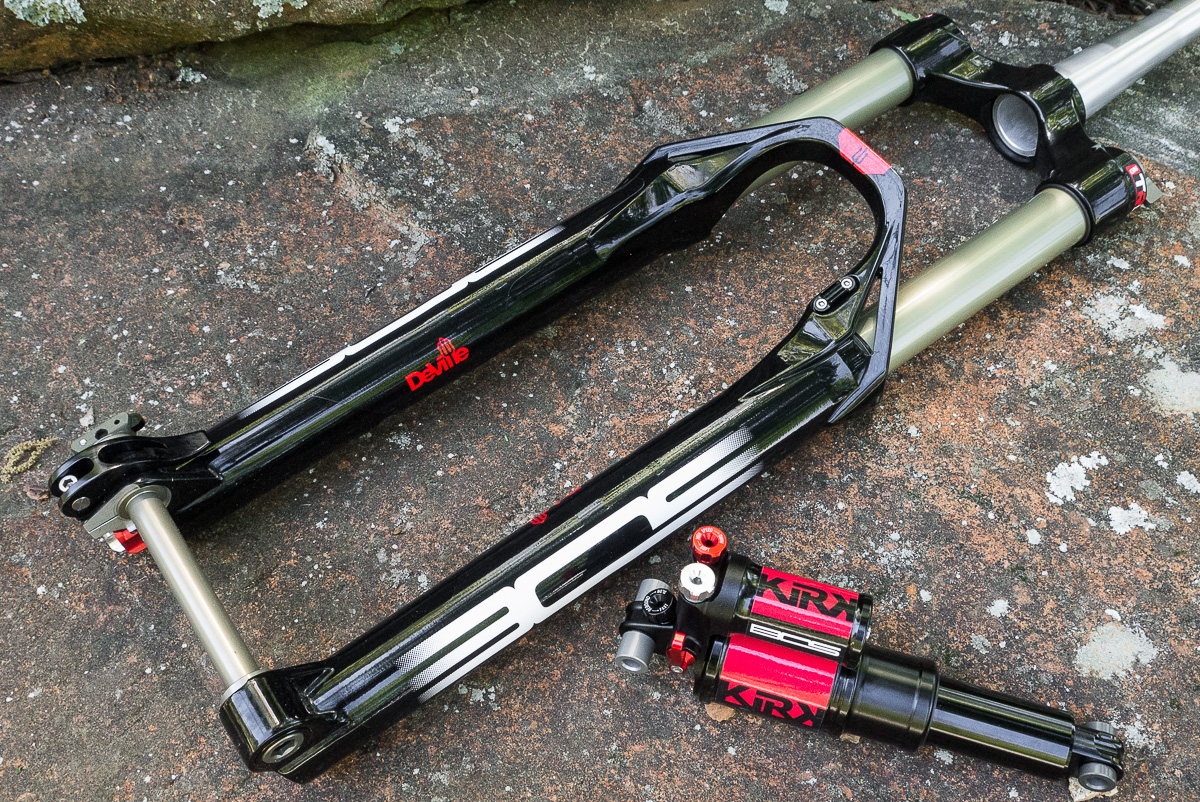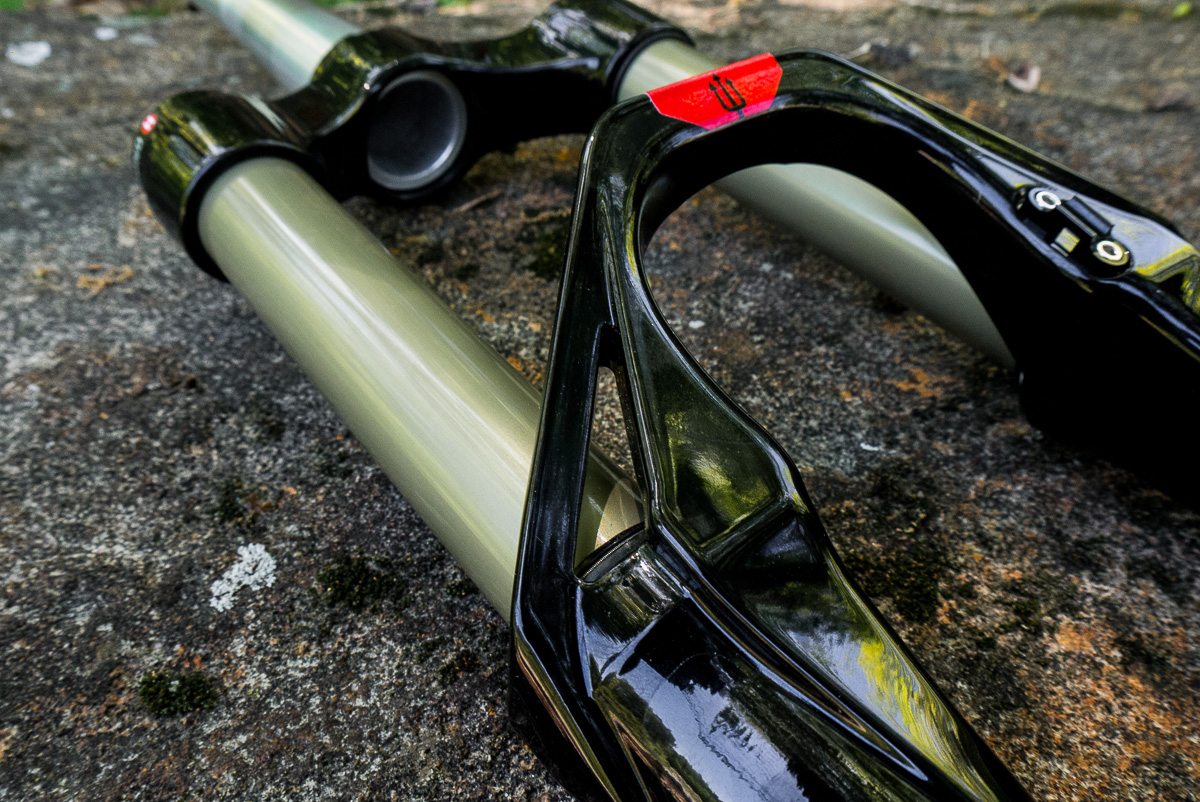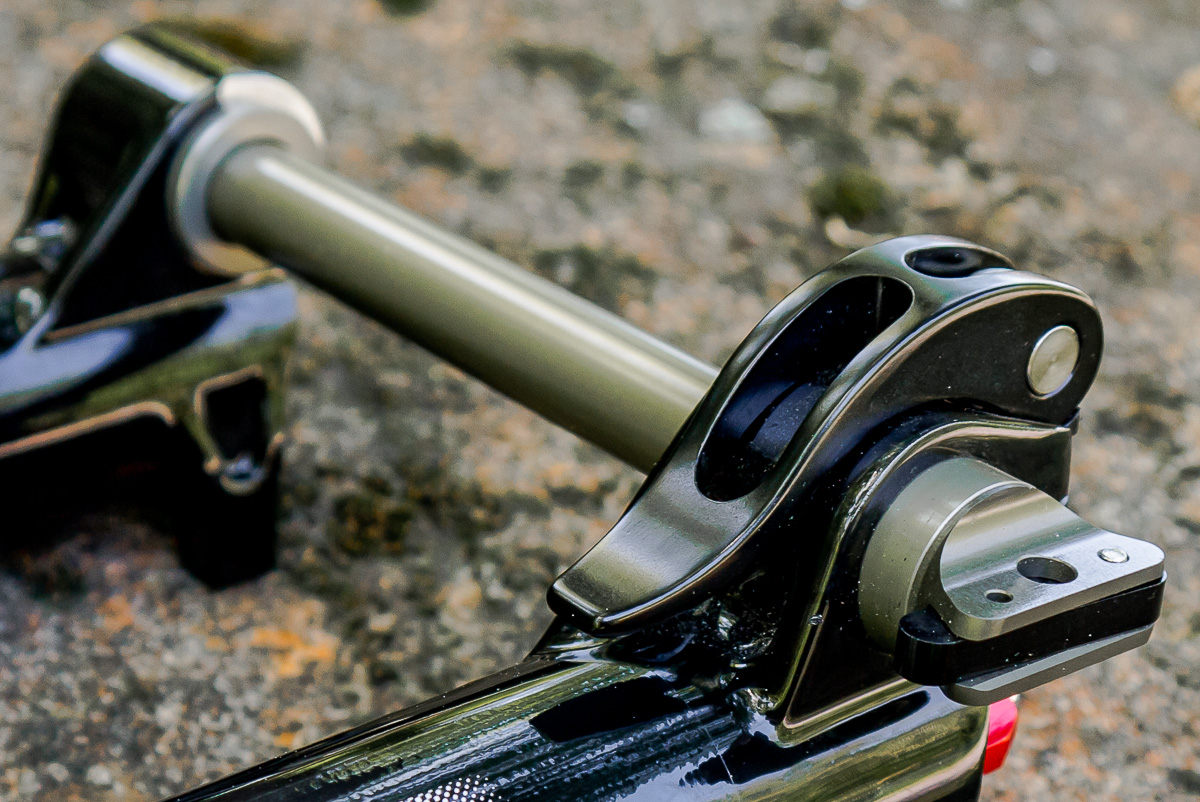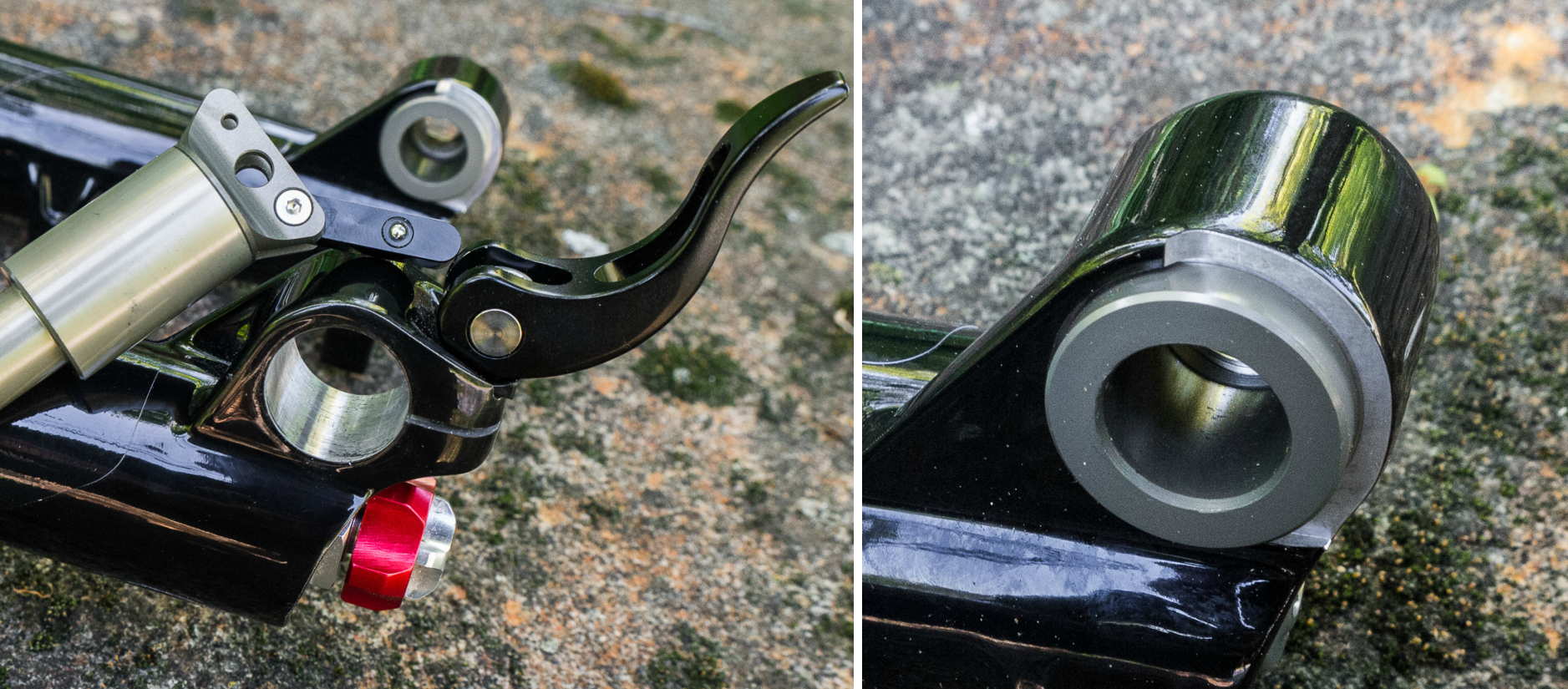BOS suspension, based in France was established in 1999 and has a similar, albeit much shorter history to that of Öhlins as far as being a manufacturer of high-end suspension in motor-sports… except that BOS actually started out in bicycle suspension. Founder Olivier Bossard started BOS for the purpose of improving a stock mass-produced fork’s damping and in turn assisted many in becoming world champions in downhill and XC. His talents in suspension damping then led him to motor-sports and away from bikes with many wins including a World Rally Championship.
Getting back into the un-motorized sports (insert e-bike jab here), BOS went all out as they felt their dampers needed a deserving chassis. They sent us the revised Deville TRC, (we got one of the only ones in the wild… it’s #009 off of the assembly line), that has some interesting tech without any of the excess “modes” found on most others. We also got our hands on their highly acclaimed KIRK 2 three-way shock that has the same abundance of tune-ability…
Having had quite a successful and well-established presence in Europe, despite their worthy performance, the biggest thing holding them back in the US was a lack of parts and service centers to maintain them. To remedy that, BOS has set up shop with QBP’s service center to provide easy to obtain parts and service. Currently most parts are in stock with more on the way. Shops and tech-savvy consumers can purchase parts to perform basic services and complete services will need to be sent in. According to QBP’s service department, there is an average 4 to 5 day turn around on all service, and for a slight up-charge, they offer a 2 day “Premium Service” turn around.
If you’re looking for a turn-key fork that you can pretty much just air up and go… this is not it. The Deville TRC fork ($1,200), is designed to be properly tuned. There is no lock-out or “ride characteristic” modes. Rather than using a sealed damper cartridge, BOS uses an open bath design using shims like that of motorcycle forks. Adjustments include the TRC (Twin Rate Curve) switch, rebound and high & low speed compression. This may sound complicated, but it’s really rather simple as you set and forget and only make small adjustments if need be on different trails.
The TRC switch (L) ramps up the fork’s compression & rebound (it gets firmer in both directions) as well as limits the fork’s travel to 110mm (but will give up 130mm if you hit something big). I don’t get along with lockouts, (unless on a long road), as the suspension still needs to do its job if the climb is anything but concrete smooth, (that and I forget to unlock it sometimes). The TRC sounds like something I could live with since there is little compromise so I’m looking forward to see if it works as good in practice as it sounds in theory.
Rebound (C) is pretty much just that… it’s when you turn the fork over you see the business end. The two knobs, though enticing, it’s worth doing a little research before messing with these. The high & low speed compression (R), controls the speed at which the fork reacts under compression. Slow speed compression controls things like pedaling forces and gradual changes in the terrain, but needs to be adjusted to keep the bike from suffering from too much sag while riding so it can use the optimal amount of travel when needed. High speed compression controls the speed of the fork over sharper bumps like roots and squared edges. Blindly messing with these can mess things up, but luckily, BOS provides a great set of recommendations for all of these and even has air pressure recommendations for both recreational and racing use.
I’ve always like’d BOS’s thru-axle as the simple effective design doesn’t require a massive amount of tightening down to hold it in place. Even better the few people left out there hurt over the death of the 20mm thru-axle on sub 7-inch travel bikes can rejoice as the Deville’s lowers are made for a 20mm thru axle and uses an nifty little adapter so it will work with the more common 15mm thru-axle.
The Kirk 2 three-way piggy back shock ($850), has the same rebound and high & low speed compression adjustments as the Deville as well as a switch that locks out the low speed compression to aid in climbing. You can also add volume spacers to change how progressive the shock’s curve is.
The weight of the Deville came out 75g above the claimed 2050g, but that is including fluids and the thru axle. The Kirk 2 three-way came in at about 50 grams under the claimed 450g. Overall details of the fork and shock are superb and I’m looking forward to seeing how it performs on my Banshee Spitfire that is currently running a Pike and a Cane Creek Double Barrel.






